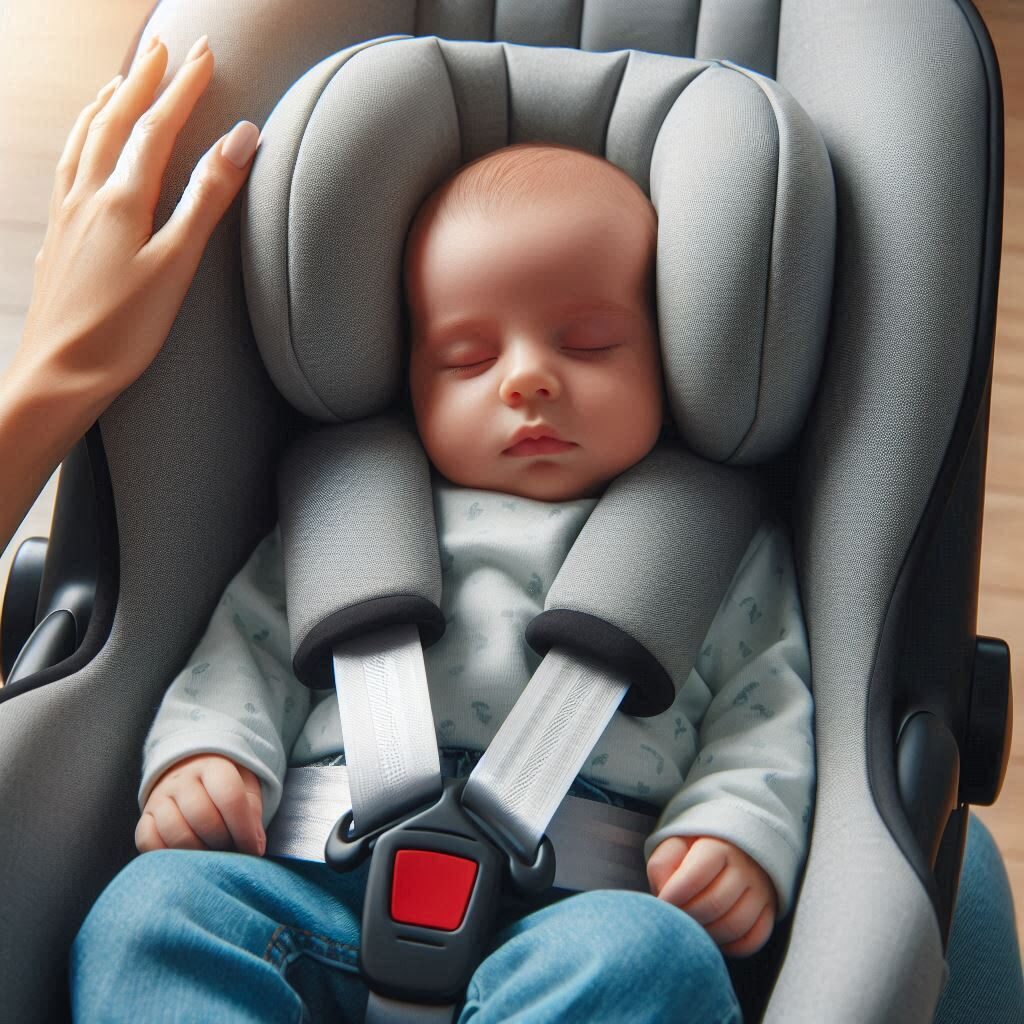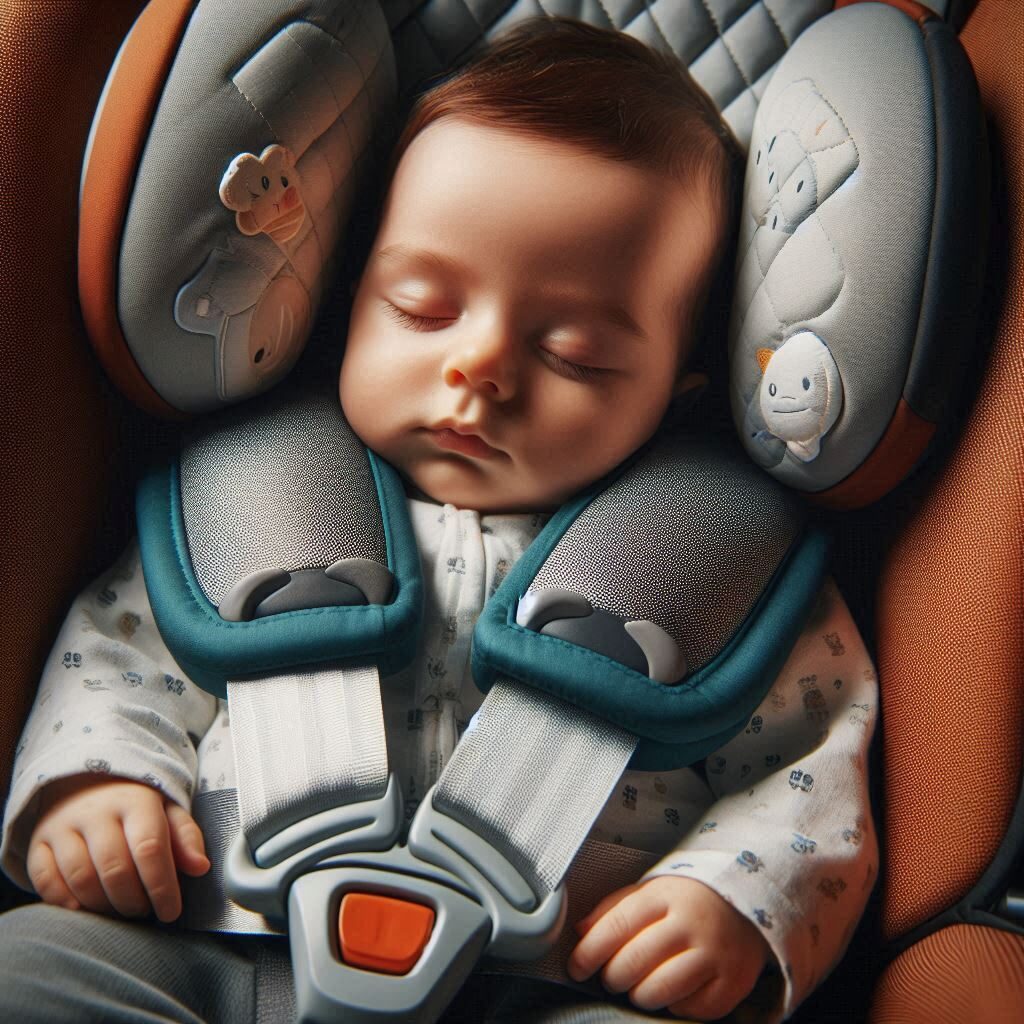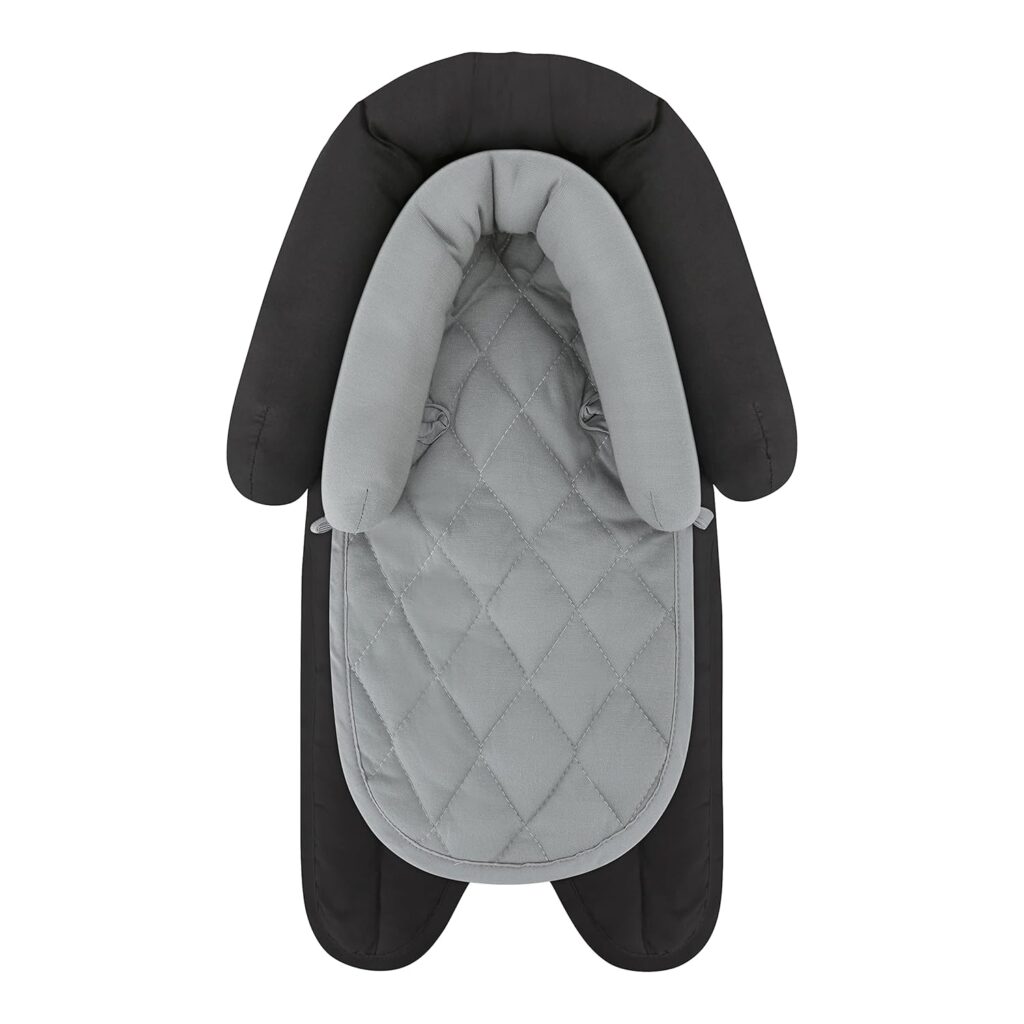
As a Certified Child Passenger Safety Technician (CPST), my top priority is ensuring the safest possible car rides for little ones. For new parents, the world of car seats can be overwhelming, especially when it comes to aftermarket products like head supports.
Here’s the truth: There are currently no aftermarket head supports for infant car seats that are crash-tested and approved for use in the United States. The National Highway Traffic Safety Administration (NHTSA) and the American Academy of Pediatrics (AAP) both advise against using unapproved products. Here’s why:
- Safety Concerns: These products haven’t undergone crash testing as part of the car seat system. They could potentially interfere with the car seat’s harness system or headrest, compromising your baby’s safety in an accident.
- Positioning Issues: Adding extra padding can affect the proper positioning of your baby in the car seat, potentially leading to airway obstruction or slouching.
Do Infant Car Seats Need Head Support?
Most infant car seats come with sufficient head support built-in, especially for newborns. However, some situations might benefit from additional support:
- Premature babies: Their head and neck muscles might be weaker, requiring extra support to maintain proper positioning.
- Small newborns: If your baby seems to have extra space around their head in the car seat, a head support can provide a snugger fit.
- Long car rides: For extended journeys, additional head support can enhance comfort and prevent head slumping during sleep.
What if my car seat already has a head insert?
Many infant car seats come with a removable head insert for newborns. This insert is typically designed to be removed as your baby grows. If your car seat has one, consult the manual to see how long it’s recommended for use.
Important Safety Considerations
While head support can be helpful, safety is paramount. Here’s what to keep in mind:
- Never use aftermarket head supports that haven’t been crash-tested for use with your specific car seat model. Consult your car seat’s manual or the manufacturer for recommendations.
- Avoid using rolled-up blankets or towels. These can compress in a crash, blocking airways.
- Ensure proper harness fit. A snug harness is crucial for car seat safety, and head support shouldn’t interfere with this.
Addressing Common Concerns: Head Flopping and Discomfort

- Head Flopping During Sleep: This is a natural concern, especially for newborns with weak neck muscles. Here’s how to manage it:
- Minimize Long Trips: Whenever possible, keep car rides short for newborns.
- Frequent Breaks: Take breaks on long journeys. Take your baby out of the car seat and allow them to stretch and move their head and neck.
- Feeding Breaks: Breastfeeding or bottle-feeding provides natural head support during car rides.
- Headrest Discomfort: If the built-in headrest seems uncomfortable for your baby, consider using a soft, breathable cotton fabric liner for the car seat. This can provide additional comfort without compromising safety.
Additional Resources and Support
- American Academy of Pediatrics (AAP)
- National Highway Traffic Safety Administration (NHTSA)
- Safe Kids Worldwide
Safe and Secure Alternatives
While there aren’t crash-tested head supports, there are safe alternatives that can provide additional comfort and support for your newborn’s head and neck:
- Car Seat Inserts: Many car seat manufacturers sell approved inserts specifically designed for their car seats. These padded inserts provide extra cushioning for your baby’s whole body, including their head and neck. Look for inserts made from breathable and hypoallergenic materials like cotton or bamboo, and choose one that’s machine washable for easy cleaning. Always check your car seat manual or manufacturer’s website for recommendations on compatible inserts.
- Car Seat Canopy: Most infant car seats come with a canopy that can be extended to provide shade and some head support. This is a great built-in option for added comfort during sunny rides.
Harness Fit is Key
Remember, the most important factor for your baby’s safety is a snug and secure harness fit. Here’s how to ensure your baby is buckled in properly:
- Chest Clip Placement: The chest clip should be at armpit level.
- Harness Straps: The harness straps should be snug – you should be able to fit one fingertip between the strap and your baby’s chest. Never route the straps under your baby’s arms.
Keeping Your Baby Comfortable
Here are some additional tips for keeping your baby comfortable and safe during car rides:
- Harness Positioning: Ensure the harness straps are snug and level across your baby’s chest, at or slightly below their shoulders. A loose harness can be dangerous in a crash.
- Leg Position: Your baby’s legs should be bent at a comfortable angle, with their knees slightly higher than their hips. This helps prevent slouching and discomfort.
- Monitor Your Baby: Take breaks during long car trips to check on your baby and adjust their position if needed.
Conclusion
While ensuring comfort is important, the safest way to support your baby’s head and neck during car rides is by using the infant car seat correctly with the built-in features. If you have any concerns about your specific car seat, your baby’s positioning, or want a personalized assessment, consult a CPST for expert guidance.
Remember: When it comes to car seat safety, stick with the manufacturer’s recommendations and avoid using unapproved aftermarket products. By following these tips and choosing safe alternatives for head support, you can ensure a comfortable and secure journey for your precious cargo.

